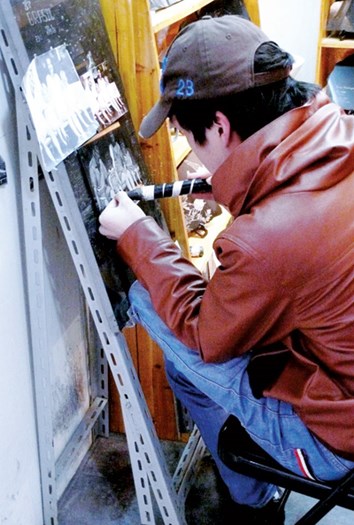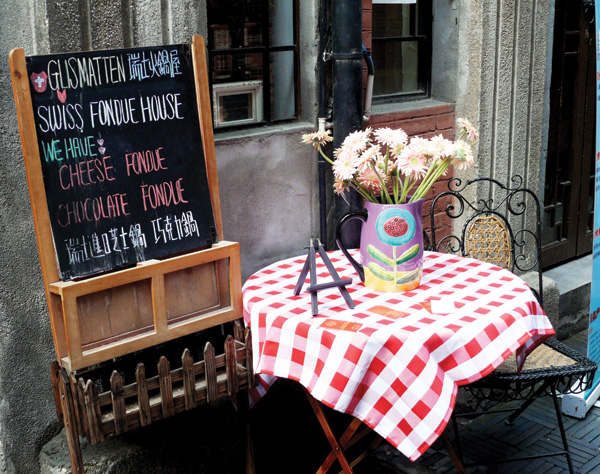SHANGHAI – This is the most modern and technologically advanced city in China. But it’s Shanghai's past that will really excites foreigners.
First, it’s important to remember that Shanghai is unlike any other Chinese city. Although it has an Asian soul, Shanghai is very European at heart, thanks to the great influence the French and British had on the development of China’s economic capital over the centuries. That influence can still be seen in Shanghai’s colonial architecture and handsome Paris-style avenues lined with plane trees the French planted during their stay.
But to really find out what makes Shanghai different from Beijing, Xian, Nanjing or other great Chinese cities, you have to look deep inside the forest of glass and steel towers that have sprung up around quaint old neighbourhoods, that thankfully have been brought back to life just in time for Expo visitors to enjoy.
With an expected half million people visiting the Expo site each day – the fair runs from early May to late October this year and is themed “Better City, Better Life” – you may be looking for some quiet spots in which to escape. On a recent visit to Shanghai, I discovered a number of sites that have been dusted off and spruced up, like:
Tianzifang
Almost lost in the city’s handsome old French Quarter in a area simply known as Lane 210 off Taikang Road. It is a labyrinth of narrow streets which covers 20,000 square metres and was once a thriving industrial section during the city’s colonial heyday.
Now, the charming neighbourhood is home to Shanghai’s creative artist community and over 100 artists and designers from all over the world work and live in renovated shops that still retain their old world charm.


Above: The small alleys that run off the old French quarter are filled with Paris-style cafes.
Tianzifang has been a welcome haven for artists who have been dodging Shanghai’s overactive property developers in recent years. Along with the art studios and shops at Tianzifang, you’ll also find some of Shanghai’s best new restaurants and fashion boutiques. One in particular, Vervia, is causing a stir among tourists thanks to its offerings of chic imported clothes and novelty items such as jewelry and glassware.
The buildings that make up Tianzifang are Shikumen style (a traditional residential house) and while mainly an artist area now, locals also occupy some of the apartments above the shops, where laundry hangs from bamboo rods and the family’s caged bird entertains passersby.
Yuyuan Gardens
This is one of the must-see places when visiting Shanghai. Located in the Anren Jie district of the city, the classical gardens date back to the Ming Dynasty and were completed in 1577. Yu is the Chinese name meaning “pleasing” or “satisfying” and the traditional Chinese garden setting you’ll find in Anren Jie certainly offers visitors an escape from the ear splitting confusion that is Shanghai’s busy streets just outside.
In the 400 years of its existence, Yuyuan Garden has undergone many changes. During the later stages of the Ming Dynasty, it became dilapidated. But in 1760, rich merchants bought Yuyuan Garden and spent more than 20 years reconstructing the buildings. During the Opium War of the 19th century, Yuyuan was severely damaged and the beautiful garden you see today is the result of a five-year restoration project which began in 1956. The garden was open to the public in September, 1961.
The pavilions, halls, rockeries, ponds and cloisters all have unique characteristics. There are six main scenic areas in the garden: Sansui Hall, Wanhua Chamber, Dianchun Hall, Huijing Hall, Yuhua Hall and the Inner Garden widow.
The garden is especially crowded on weekends when locals come here to eat in one of the many restaurants offering unique Shanghai cuisine. Visiting dignitaries are always brought to the Yuyuan Garden to dine and pictures of presidents, prime ministers and monarchs line restaurant walls.
1933 Building
Located at 29 Shajing Road, this former slaughter house built by the British in 1933 has been transformed into one of the city’s chic new gathering spots, thanks to a major restoration project. The 1933 Building, as it is now simply known, offers some fabulous fine dining options along with craft shops manned by some of the city’s most creative artisans. The building, built with reinforced concrete, still features the ramps and pens used to hold the animals before they met their demise. Ironically, some of the city’s best steak restaurants are now located here.
Like Tianzifang, the 1933 Building, also known locally as Old Millfun, has attracted an array of artists whose works are displayed on the grey, cold walls that are now softly lit by colourful flood lights.
Xintiandi
A Shanghai night would not be complete without a visit to this entertainment and dining spot located in a historic part of town filled with hutongs, old garden homes that date back to the Ming Dynasty.
The hutongs now house trendy restaurants and larger area buildings once used as warehouses by the city’s rich merchants have been transformed into western-style nightclubs, where local singers belt out pop and country tunes while patrons sip Chinese wine (may we suggest a 1994 Great Wall cab sav) on open-air terraces.
Xintiandi means “New Heaven and Earth”, and is considered one of the first lifestyle centres in China. Xintiandi is also located near the site of the first conference of the Communist Party of China, chaired by Mao himself.